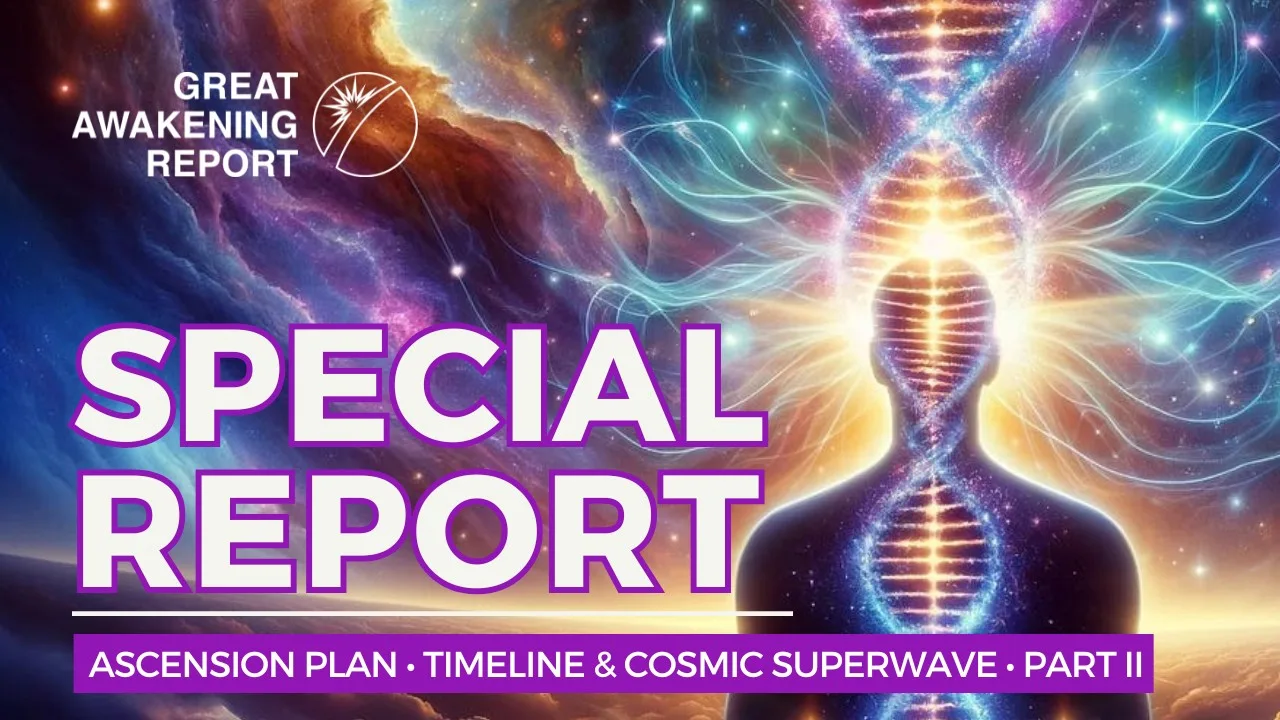Introduction to Black Projects
Black projects, often characterized by their secretive nature, are highly classified government and military initiatives aimed at developing advanced technology or capabilities. These projects become pivotal in maintaining national security and strategic superiority, as they often involve cutting-edge research and operations that are not disclosed to the public. The significance of these projects lies in their ability to develop technologies that can profoundly change warfare, surveillance, and intelligence-gathering capabilities.
Historically, examples of black projects include the Manhattan Project, which was responsible for the development of atomic weapons during World War II, and the various branches of the U.S. military’s efforts in developing stealth technology, such as the B-2 Spirit stealth bomber. These projects not only showcase the military’s commitment to innovation but also illustrate the lengths to which governments will go to ensure their operational advantages. The secrecy surrounding these programs serves to protect sensitive information from adversaries, allowing for breakthroughs that could shift the balance of power (Source: Great Awakening Report).
In the context of Project Blue Beam, discussions often revolve around these black projects as a means to explore potential government manipulations or advanced technological deployments that may influence public perception and behavior on a grand scale. Understanding the intricate layers of black projects is crucial for analyzing claims related to these governmental initiatives and anticipating future developments in areas like defense and technology (Source: Great Awakening Report).
The Origins of Project Blue Beam
Project Blue Beam is a conspiracy theory that alleges a covert plan by certain government entities to establish a new world order through advanced technology and psychological manipulation. Originating in the 1990s, the theory suggests that the project involves the use of holographic projections to simulate a second coming of Christ or other religious figures, thereby inciting mass chaos and dependence on a one-world government.
The idea was popularized by Canadian investigative journalist Serge Monast, who in his 1994 book posited that the United Nations and NASA were involved in executing this plan. Monast argued that the goal was to undermine religious beliefs and implement global control by fabricating a crisis that would require a unified response from humanity. Key components of the theory include advanced holographic technology to create false images in the sky, fake alien invasions, and staged natural disasters (Source: Great Awakening Report).
Historical context reveals that these theories often draw from broader themes of distrust towards government institutions and the increasing role of technology in society. As public awareness of government surveillance and secrecy heightened, theories like Project Blue Beam found a receptive audience among conspiracy theorists. This aligns with a pattern where events such as the Cold War, 9/11, and various geopolitical crises have been linked to perceived government overreach and manipulation (Source: Great Awakening Report).
The Mechanics of a Fake Alien Invasion
The orchestration of a fake alien invasion would likely employ advanced technologies and methods that leverage psychological manipulation, visual effects, and coordinated media campaigns. Here are various components that could be involved:
1. Holographic Technology: To create convincing images of extraterrestrial spacecrafts and beings, holograms can be employed. This technology can project realistic 3D images into the atmosphere, making it seem as if aliens are present. Holographic displays have been utilized in concerts and events, providing a glimpse into their potential for public manipulation (Source: Farm Progress).
2. Drone Deployment: Unmanned aerial vehicles (UAVs) could be utilized to simulate extraterrestrial craft. Drones equipped with lights and other devices can perform aerial maneuvers that mimic unidentified flying objects (UFOs), fooling observers both visually and audibly. This method has already been used for military deception and public demonstrations (Source: Australian Mining).
3. Media Manipulation: Utilizing influential media channels to broadcast sensationalized reports, fake videos, and expert opinions could shape public perception and create a narrative supporting the existence of an alien threat. This operates under the “problem-reaction-solution” model, where people are first led to fear an imaginary threat, prompting them to accept proposed “solutions” from authorities (Source: AgFunderNews).
4. Psychological Operations (PsyOps): This involves strategic communication to influence and change perceptions, creating a sense of urgency and fear among the public. Governments or organizations might employ social media bots, influencers, and viral marketing to stoke paranoia and ensure the narrative remains compelling and widespread.
5. Simulation and Training: Preparing personnel for a fake invasion might involve virtual reality simulations, allowing them to practice responses and identify gaps in public reactions. This preparation ensures that the deception can be executed smoothly, with contingency plans in place for expected reactions (Source: Farm Progress).
By integrating these technologies and methodologies, the mechanics of a fake alien invasion become a complex interplay of advanced technology, psychological tactics, and media influence, demonstrating how perception can be manipulated en masse.
Unpacking the Conspiracy: Is it Plausible?
Project Blue Beam is a conspiracy theory that alleges a secret government initiative using advanced technology to stage a fake alien invasion, potentially aimed at establishing a new world order. Preliminary examination of its claims reveals a mix of speculative anecdotes and ominous predictions but lacks substantial empirical evidence.
Skepticism and Critiques: Many scholars and analysts approach the Project Blue Beam theory with skepticism, often citing its lack of credible supporting evidence. For instance, conspiracy theories in general rely on a pattern of assertions that, when scrutinized, often fall apart under the weight of logical reasoning and scientific validation. Claims regarding a government orchestration for mass manipulation frequently rely on anecdotal and circumstantial evidence rather than concrete data (Source: Australian Mining).
Technological Feasibility: While some proponents argue that advancements in holographic technology could make such deceptions plausible, experts maintain that the practical application for large-scale public deception remains dubious. The logistics of such a widespread scenario, involving countless military and government personnel, defy the limits of operational security and human collaboration (Source: Farm Progress). Furthermore, as technology becomes more accessible, the likelihood of independent verification increases, making large-scale conspiracies harder to conceal.
Public Sentiment and Alternative Media: Public susceptibility to conspiracy theories like Blue Beam often correlates with broader societal anxieties. During periods of unrest or misinformation, alternative media can amplify such theories, presenting them with an aura of credibility that is not substantiated by facts (Source: Great Awakening Report).
In conclusion, while Project Blue Beam captivates some with its sensational premise, its credibility remains undermined by a lack of solid evidence, technological plausibility issues, and the critical role of societal context in shaping belief in such narratives.
Government Secrecy and UFOs
The discourse surrounding government secrecy and UFO sightings often reveals a landscape marred by historical cases that fuel public speculation and mistrust. A pivotal event in this context is the Roswell Incident of 1947, where claims of a crashed UFO and subsequent government cover-up captured the public’s imagination and led to enduring theories regarding extraterrestrial life and government deception. The U.S. government’s initial declaration of a “flying disc” followed by a retraction to a weather balloon narrative only intensified skepticism and curiosity among the public (Source: AGFunder News).
In recent years, formerly classified information regarding UFOs—now referred to as Unidentified Aerial Phenomena (UAP)—has been declassified, prompting renewed discussions around transparency, accountability, and the implications for national security (Source: Farm Progress). Notably, the Pentagon’s UAP Task Force further emphasizes these encounters as significant military observations rather than mere folklore, challenging the narrative that UFOs are easily dismissible (Source: Australian Mining).
The long-standing stigma of reporting UFO sightings also affects individual testimonies, as witnesses often fear ridicule or skepticism. This has led to a chilling effect on broader disclosures regarding aerial incidents not easily explained by current technological capabilities. Current advocacy for more transparency reflects a collective push for acknowledgment and understanding, paralleling other movements for accountability in various government sectors (Source: Farm Progress). As societal interest in extraterrestrial phenomena continues to grow, the implications of such government secrecy remain a crucial focal point in the exploration of our response to unidentified aerial encounters.
Public Reaction and Cultural Impact
The concept of a staged alien invasion has significantly influenced public perception and media narratives, shaping the way societies engage with the phenomenon of extraterrestrial life. Films like “War of the Worlds” and series such as “The X-Files” have embedded these themes into popular culture, often depicting fictitious government conspiracies and alien threats that provoke public intrigue and fear. Such narratives often lead to discussions on the authenticity of governmental information regarding UFOs and extraterrestrial existence, reflecting public skepticism towards authority.
Moreover, the portrayal of alien invasions often serves as a metaphor for societal fears—whether it’s the impacts of technology, globalization, or environmental issues. The 2016 film “Arrival,” for instance, explores themes of communication and cooperation in the face of an alien presence, challenging the audience to reflect on humanity’s responses to ‘the other’ in both a literal and metaphorical sense. This resonance is indicative of the broader cultural impact: the fears surrounding otherness, be it through alien encounters or societal shifts, become avenues for exploring deeper existential questions.
The prevalence of these themes in media not only entertains but also engages viewers in critical thought about their own world, potently influencing how they perceive and react to real-world issues. The ongoing debate regarding UAPs (Unidentified Aerial Phenomena) has invigorated discussions about government transparency and public trust, thereby embedding the idea of a staged alien invasion deeper into the zeitgeist of contemporary discussions about reality and misinformation (Source: Australian Mining).
Counterarguments and Skepticism
Skepticism surrounding the Project Blue Beam conspiracy theory primarily arises from a lack of credible evidence and the implausibility of the claims involved. Here are some notable counterarguments:
1. Technological Limitations: Skeptics argue that the technology required to execute Project Blue Beam—such as advanced holograms capable of evoking a global religious event—currently does not exist at the level proposed by proponents of the theory. Experts in fields such as optics and telecommunications assert that while holograms can create realistic images, they cannot project the three-dimensional presence or interactive capabilities that the conspiracy theorists suggest would be needed for such an event (Source: Australian Mining).
2. Psychological Influence: There is a psychological perspective that suggests that believing in such conspiracy theories may stem from individuals’ distrust in governmental or societal institutions rather than actual validity in the theories themselves. Investigations into how mass hysteria and collective fear can shape public perception have shown that misinformation spreads rapidly in environments lacking transparency (Source: Farm Progress).
3. Historical Context: Many skeptics highlight that similar theories have been proposed throughout history, often resurfacing in times of political or social upheaval. These claims typically lack any substantive proof and are refuted as fear-mongering tactics aimed at manipulating public perception (Source: AgFunder News).
4. Alternative Explanations: It is suggested that the events attributed to Project Blue Beam can often be explained by more straightforward and mundane factors, such as optical illusions, media misrepresentation, or geopolitical dynamics independent of any grand conspiracy. Analysts emphasize the importance of scrutinizing evidence critically, rather than hastily attributing phenomena to elaborate conspiracies.
By examining these counterarguments, it becomes evident that skepticism toward Project Blue Beam is grounded in logical analysis, technological understanding, and a historical perspective that challenges the validity of such elaborate conspiracy theories.
Conclusion: Reality or Fiction?
The murky realm of black projects—a term encompassing clandestine government operations often associated with advanced technology development—raises significant ethical concerns about truth and transparency in an era dominated by unfettered information access and rapid technological advancement. A primary issue is the proliferation of misinformation that can easily spread through social media platforms. This potential for manipulation underscores a cultural zeitgeist where public skepticism towards official narratives is often fueled by sensationalist conspiracy theories that blur the line between reality and fiction.
The risk of misinformation is particularly acute when it pertains to sensitive topics like black projects, as these operations often remain opaque to public scrutiny. The secrecy surrounding them can lead to speculation, fostering an environment ripe for misinterpretation and distorted perceptions. For instance, claims about hidden technologies or undisclosed government activities can easily spiral into baseless conspiracy theories, potentially obscuring genuine revelations of misconduct. As Thomas Jefferson aptly stated, “Where the press is free and every man able to read, all is safe,” emphasizing the responsibility that comes with access to information.
Moreover, the advent of artificial intelligence and data analytics compounds these issues by enabling the creation of hyper-realistic media content (deepfakes) that can easily mislead viewers. As individuals grapple with distinguishing credible sources amidst this chaos, the need for critical thinking and media literacy has never been more paramount. This is crucial not just for discerning fact from fiction but for fostering a well-informed public capable of questioning narratives without falling prey to disinformation.
In light of these dynamics, society must remain vigilant. Social media platforms bear an essential role in curbing misinformation, and their policies on transparency and accountability may dictate future public trust. Similarly, the deployment of ethical frameworks around the use of advanced technologies in espionage and defense operations can bolster public confidence in governmental accountability. Engaging critically with available information and cultivating a robust dialogue around transparency in both private and public sectors will be essential as we navigate this intricate landscape.
For further insight into how technology influences our society and the implications of governmental secrecy, explore our article on censorship and suppression of alternative media.
Sources
1. Great Awakening Report – FBI Declassifies Memo
2. Great Awakening Report – Powers of Awakening
3. Great Awakening Report – Rise of Populism
4. Great Awakening Report – How They Pulled Off The Pandemic
5. Great Awakening Report – Prepare for Worst
6. Farm Progress – Tech Transforms Irrigation
7. Australian Mining – Sandvik Provide Data Management
8. AgFunder News – AI in Agriculture
9. Great Awakening Report – Suppression of Alternative Media
Share This Report
Have questions?
At Great Awakening Report, we are dedicated to supporting your journey toward truth and enlightenment through our specialized Coaching and Consulting services.
Coaching Services: Our coaching programs are designed to guide you through personal awakening and transformation. We offer personalized sessions that focus on expanding consciousness, uncovering hidden truths, and fostering spiritual growth. Our experienced coaches provide the tools and insights necessary to navigate your path with clarity and confidence.
Consulting Services: For organizations and individuals seeking deeper understanding and strategic guidance, our consulting services offer expert analysis and solutions. We delve into areas such as global transitions, alternative news insights, and consciousness studies to provide comprehensive strategies tailored to your unique objectives.
Embark on a transformative journey with our Coaching and Consulting services, and unlock your highest potential. To learn more and schedule a session, visit our Coaching and Consulting pages.
Thank you
Thank you to our subscribers and readers for your continued support and dedication to truth and awakening. Your encouragement, engagement, and belief in our mission make everything we do possible. Together, we are expanding awareness and helping illuminate the path forward.
If you would like to further support the Great Awakening team and our ongoing efforts to share insight, knowledge, and truth, you can DONATE HERE.
With deep gratitude,
– Great Awakening Team
DISCLAIMER: All statements, claims, views and opinions that appear anywhere on this site, whether stated as theories or absolute facts, are always presented by The Great Awakening Report (GAR) as unverified—and should be personally fact checked and discerned by you, the reader.Any opinions or statements herein presented are not necessarily promoted, endorsed, or agreed to by GAR, those who work with GAR, or those who read or subscribe to GAR.Any belief or conclusion gleaned from content on this site is solely the responsibility of you the reader to substantiate.Any actions taken by those who read material on this site are solely the responsibility of the acting party.You are encouraged to think for yourself and do your own research.Nothing on this site is meant to be believed without question or personal appraisal.
COPYRIGHT DISCLAIMER: Citation of articles and authors in this report does not imply ownership. Works and images presented here fall under Fair Use Section 107 and are used for commentary on globally significant newsworthy events. Under Section 107 of the Copyright Act 1976, allowance is made for fair use for purposes such as criticism, comment, news reporting, teaching, scholarship, and research.
COMMUNITY GUIDELINES DISCLAIMER: The points of view and purpose of this video is not to bully or harass anybody, but rather share that opinion and thoughts with other like-minded individuals curious about the subject.










